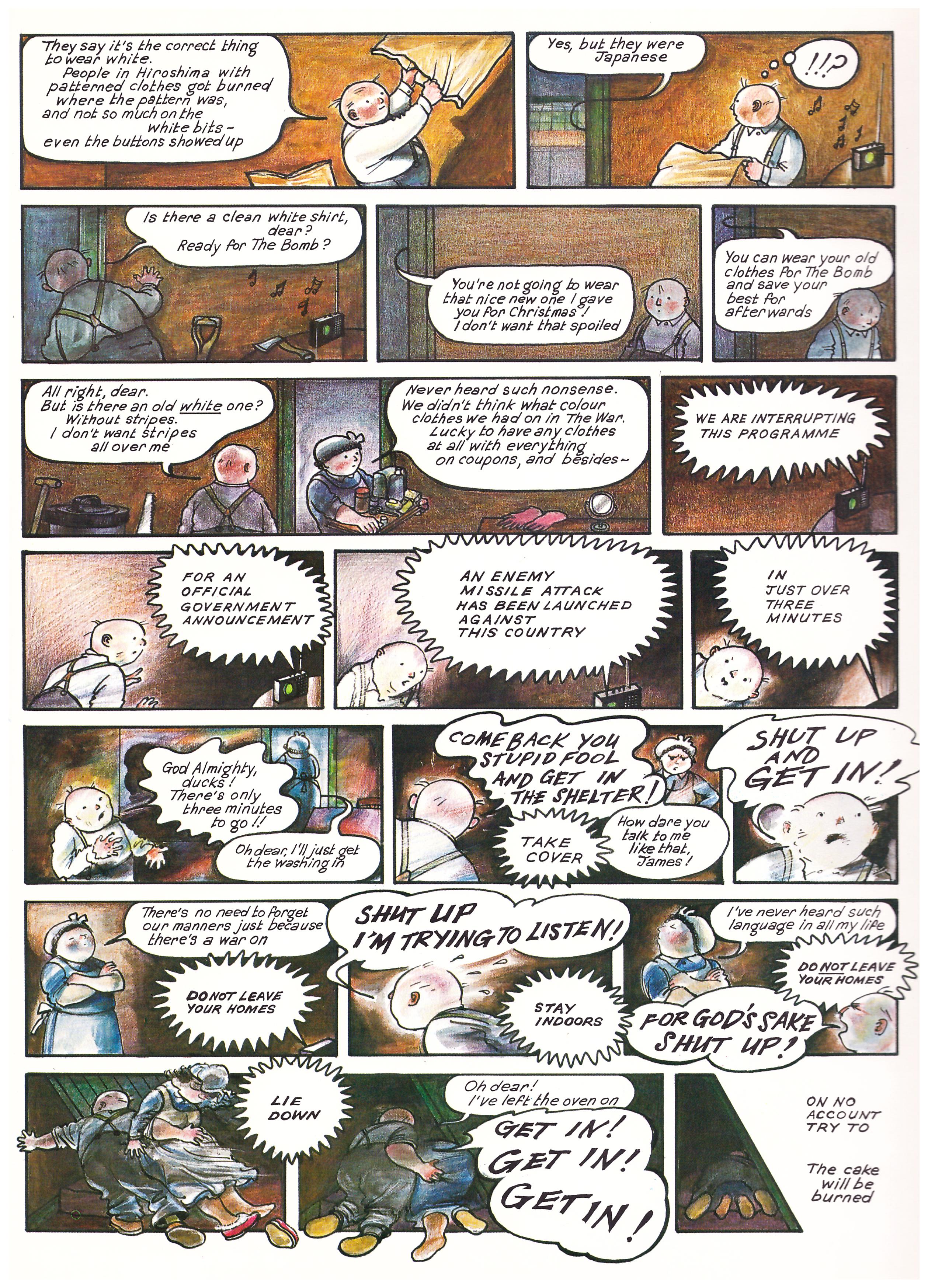

In 1988, he published the graphic novel Ethel & Ernest, the story of his parents’ 43-year-long relationship before they died in 1971. It was nominated for the Academy Award for best animated short film and won a BAFTA TV Award for best children’s program. The Snowman was originally created by Briggs in 1978 as a wordless picture book before being adapted for tv in 1982. A few years later, he was winning prestigious national awards for his art.īriggs is perhaps best known, though, for creating the picture book which would eventually become the Oscar-nominated short The Snowman, a holiday classic that still plays each year on Channel 4 in the U.K. His first published piece was The Strange House in 1961. After his time there, he quickly found work illustrating for magazines, advertising agencies, and books.īy the 1960s, he began to work on his own stories, disillusioned by the quality of the work he was being commissioned with and sure he could do better on his own.

After fulfilling his national service, he enrolled in the Slade School of Fine Art in London. In a 2004 interview with The Guardian, he recalled that his desire to do commercial art horrified many at the school, but he remained undeterred. At 15, he enrolled in Wimbledon Art College with the intention of learning to draw cartoons. No cause of death was included.īriggs was born in 1934 and went to grammar school in Wimbledon. He liked The Guardian editorial describing himself as an ‘iconoclastic national treasure,’” the statement finished. All of us close to him knew his irreverent humor – this could be biting in his work when it came to those in power.

When the Wind Blows tries hard to bind ties with the actual movie, which is splendid in itself, but aside from a few effective tracks, the soundtrack remains quite pedestrian.“He played practical jokes and enjoyed them being played on him. Dialogue from both characters is woven between each song, enhancing their naïve outlook and their false hope for the "powers that be." Hugh Cornwell's "Facts and Figures" and Paul Hardcastle's "The Shuffle" are short on amiability and come off as poorly manufactured, weakened by run-of-the-mill '80s rhythms. Only "Folded Flags" seems to associate with the movie's cold war theme the best, and some relatively smooth saxophone playing from Mel Collins helps to resuscitate things a wee bit. Bowie's "When the Wind Blows" and Genesis' "The Brazilian" seem to carry the most flow musically, and the ten-part medley from Waters and his studio team has its moments, but for the most part it drags and sputters with boggy instrumental staleness.

Raymond Briggs' animated tale about an elderly British couple living out their last days after the bomb has dropped spawned this hit-and-miss soundtrack, with contributions from Squeeze, David Bowie, Genesis, and a lengthy coda from Roger Waters and the Bleeding Heart Band.


 0 kommentar(er)
0 kommentar(er)
